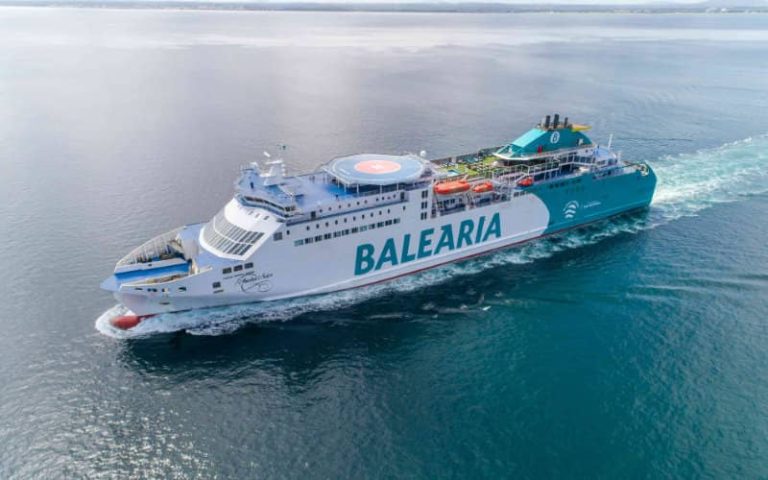Spanish shipping company Baleària plans to launch a fully electric ferry service between Morocco and southern Spain by 2027, creating the first zero-emission maritime link across the Strait of Gibraltar in a major step toward decarbonising regional transport.
Unveiled at a high-profile event in Tangier on Tuesday, the initiative will deploy two high-speed electric catamarans to operate the 18-mile route between Tangier and Tarifa.
The project is part of a public-private effort to establish a “green corridor” between Africa and Europe and drew the participation of senior officials including Morocco’s Transport Minister Abdessamad Kayouh and Spanish Ambassador Enrique Ojeda.
The new link is expected to serve as a model for sustainable maritime mobility and cross-border cooperation.
Green maritime link to drive sustainable travel across the strait
The twin vessels, currently under construction at Armon Shipyard in Spain, will each be powered by four electric thrusters delivering 16 MW, with battery packs of 11,500 kWh. This power will enable the ferries to operate without generating emissions, underwater noise, or vibrations.
The ferries will accommodate up to 804 passengers and 225 vehicles, reaching speeds of 26 knots. Recharging will take just 40 minutes, enabled by cutting-edge robotic arms and port-based battery systems with a total energy storage capacity of 39 MWh.
Marine biologists will regularly monitor the environmental impact, as the Strait is a biodiverse marine area. The green corridor is expected to reduce carbon emissions by 20,000 tons annually compared to current diesel-powered ferries.
Port upgrades and technical features support zero-emission goals
Electric charging infrastructure will be installed in both Tarifa and Tangier, including 5 MW shore power in Spain and 8 MW in Morocco. Each port will also feature storage systems with 8 MWh battery capacity.
The ferries will be outfitted with advanced manoeuvring systems, including bow thrusters, rudders, and T-Foil stabilisers to improve passenger comfort.
Two large rear ramps are designed to speed up vehicle boarding and unloading, enhancing operational efficiency.
Each ship will also carry four backup diesel generators with a combined capacity of 11,200 kW for emergency situations only.
However, the crossings are expected to be entirely electric during normal operations.
Spain-Morocco maritime collaboration
Baleària’s CEO, Georges Bassoul, noted that the new service not only meets EU decarbonization targets for 2050 but delivers them 23 years ahead of schedule.
The initiative is part of a broader strategy to modernize cross-border maritime transport and improve environmental stewardship.
Described by Baleària President Adolfo Utor as “a green umbilical cord between two friendly nations,” the project exemplifies innovation through public-private collaboration.
The ferries will operate under a 15-year concession from the Algeciras Bay Port Authority, cementing long-term Spain-Morocco transport cooperation.
With advanced technology, sustainable infrastructure, and regional backing, the Baleària green corridor signals a transformative moment for eco-friendly transport between Europe and Africa.














